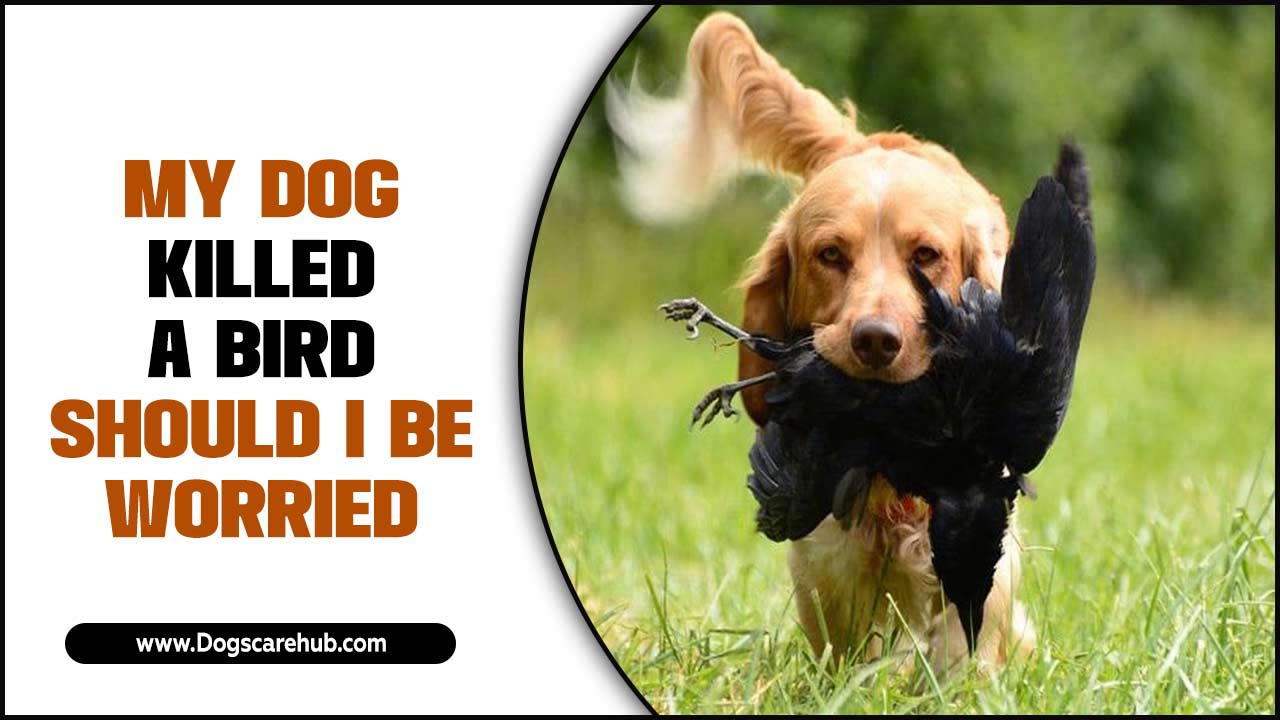Quick Summary: Understanding canine dominance issues requires recognizing that true dominance is rarely aggressive. Proven fixes focus on clear communication, consistent leadership, positive reinforcement training, and meeting your dog’s needs. These solutions build trust, not fear, leading to a well-behaved companion.
Does your dog seem to push boundaries, ignore commands, or exhibit assertive behaviors that make everyday life a little chaotic? You’re not alone! Many dog owners face what they perceive as “dominance issues.” The good news is that with the right approach, these behaviors can be managed and even resolved. We’ll explore what these behaviors really mean and offer practical, step-by-step solutions that strengthen your bond with your furry friend.
Understanding Canine Dominance: Beyond the Myths
The idea of a “dominant” dog often brings to mind images of aggressive barking, possessiveness, or challenging behavior. While some dogs can display these traits, it’s important to understand that the concept of “canine dominance” as it was once interpreted by some trainers has evolved. Modern ethologists and dog behaviorists now emphasize that many behaviors previously labeled as “dominance” are often rooted in anxiety, fear, learned behaviors, or simply a lack of clear communication from their human companions.
Instead of a rigid hierarchy where dogs are constantly trying to “be the boss,” it’s more accurate to view canine behavior through the lens of communication and context. When a dog exhibits behaviors like resource guarding (food, toys) or persistent jumping, it’s often their way of communicating a need, seeking attention, or expressing discomfort or insecurity. Our role is to become a clear, consistent, and compassionate leader, guiding them with understanding rather than force.
The goal isn’t to suppress your dog’s personality but to teach them appropriate ways to interact with the world and with you. By addressing the root cause of these behaviors and implementing positive, science-based methods, you can foster a trusting relationship and achieve a well-behaved, happy dog.
Signs That Might Be Misinterpreted as Dominance
It’s easy to label certain dog behaviors as “dominance.” However, these actions often stem from different underlying reasons. Recognizing these can help you address the actual problem more effectively. Here are some common behaviors often mistaken for dominance:
- Jumping up: While it can be a bid for attention, it’s often an excited greeting or a habit learned from lenient responses.
- Leash pulling: This is usually due to excitement, lack of training, or the dog wanting to explore ahead.
- Barking excessively: This can be a sign of boredom, anxiety, territoriality, or a need for more mental stimulation.
- Resource guarding: Protecting food, toys, or even their favorite spot might be due to insecurity or past negative experiences, not necessarily a desire to dominate.
- Ignoring commands: This could be due to distraction, not understanding the command, or a lack of motivation to comply.
- Pawing or nudging for attention: Your dog has learned that this behavior gets a response, whether positive or negative.
- Nipping or mouthing: This is common in play, especially with puppies, and indicates they haven’t learned bite inhibition.
- Paw-sweeping on furniture or people: This might be an attempt to get comfortable or seek attention in a learned way.
Understanding these common behaviors as opportunities for training and clearer communication, rather than direct challenges to your leadership, is the first step to finding effective solutions.
Proven Solutions for Canine Dominance Issues
The most effective solutions for behaviors often labeled as “dominance” focus on building a strong foundation of trust, clear communication, and positive reinforcement. These methods address the dog’s needs and anxieties, guiding them toward desirable behaviors without resorting to harsh or punitive tactics.
1. Establish Clear Communication and Consistent Rules
Dogs thrive on predictability. Inconsistent rules and confusing signals can lead to anxiety and frustration, manifesting in behaviors that seem “dominant.” Your job is to be a clear, consistent leader, not a dictator.
Setting the Stage for Success:
- Unified Front: Ensure everyone in the household is on the same page with rules and commands. Different rules from different people confuse your dog.
- Boundary Setting: Decide on clear boundaries. For example, is your dog allowed on the sofa? If yes, are there times they are not? Be consistent.
- Routine is Key: A predictable schedule for feeding, potty breaks, walks, and playtime helps your dog feel secure and understand expectations.
2. Implement Positive Reinforcement Training
Positive reinforcement focuses on rewarding desired behaviors, making them more likely to occur again. This approach builds a positive association with training and strengthens your bond.
Key Techniques:
- Reward Good Behavior Instantly: When your dog does something right (e.g., sits calmly instead of jumping), reward them immediately with praise, a small treat, or a favorite toy. Timing is crucial.
- Use High-Value Treats: For more challenging behaviors or training sessions, use treats your dog absolutely loves. This increases their motivation.
- Clicker Training: A clicker can be a precise way to mark the exact moment your dog performs the desired behavior, followed by a reward.
- “Nothing In Life Is Free” (NILIF): This concept encourages your dog to “earn” things they want (food, toys, attention) through simple behaviors like sitting before getting their meal, or waiting politely for a toy. This isn’t about withholding, but about reinforcing good manners.
The Association of Professional Dog Trainers (APDT) strongly advocates for positive reinforcement methods, citing their effectiveness and humane approach. You can learn more about their philosophy here: APDT Positive Training.
3. Address Resource Guarding with Care
Resource guarding (protecting food, toys, or items) is a serious issue that can escalate. It’s often driven by insecurity, not dominance. The goal is to change your dog’s association with their possessions and with your presence near them.
Steps to Manage Resource Guarding:
- “Trade Up”: When your dog has an item, offer them something of equal or greater value in exchange. For example, if they have a favorite toy, offer a high-value treat. As they release the toy to take the treat, say “drop it” or “trade.”
- Controlled Desensitization: Approach your dog while they have a low-value item (e.g., a regular kibble piece). Toss a few more kibble pieces near them. The goal is to teach them that your presence means good things happen, rather than something being taken away.
- Preventative Measures: Feed your dog in a quiet, undisturbed location. Don’t approach your dog while they are eating or chewing a favorite bone without a plan for positive interaction.
- Avoid Confrontation: Never try to physically take an item away from a dog who is guarding it, as this can increase their anxiety and aggression.
4. Enhance Physical and Mental Stimulation
A bored or under-exercised dog is more likely to develop problem behaviors. Providing adequate outlets for their energy and intelligence is crucial.
Enrichment Ideas:
- Daily Walks: Aim for at least two walks a day, varying the routes to provide new sights and smells.
- Puzzle Toys: Food-dispensing toys and puzzle feeders make mealtime more engaging and mentally challenging.
- Training Sessions: Short, fun training sessions can be a great mental workout. Practicing basic obedience, learning new tricks, or engaging in canine sports like agility or nose work can be very rewarding.
- Interactive Play: Games like fetch, tug-of-war (with clear rules), or hide-and-seek can strengthen your bond and burn energy.
The American Veterinary Society of Animal Behavior (AVSAB) emphasizes the importance of providing both physical and mental stimulation for dogs. Read their position statement on humane training: AVSAB Humane Dog Training Position Statement.
5. Work on Leash Manners
Pulling on the leash can be a frustrating habit. It’s often a physical manifestation of your dog’s excitement or eagerness to get somewhere.
Leash Training Tips:
- Loose-Leash Walking Practice: When your dog pulls ahead, stop walking. Wait until the leash slackens, even slightly. As soon as it does, resume walking. This teaches your dog that pulling stops forward movement.
- Reward Slack Leash Moments: Catch your dog walking nicely beside you with a loose leash. Praise them and give a treat.
- Use a Front-Clip Harness or Head Halter: These tools can provide better control without causing pain or compromising your dog’s airway. They redirect your dog’s forward momentum back towards you when they pull.
- Management Tools: Tools like the Gentle Leader or a front-clip harness can offer immediate assistance while you’re working on training.
6. Manage and Redirect Jumping and Nipping
Jumping up is often a bid for attention, and nipping can be a learned play behavior. These need consistent redirection.
Solutions for Jumping:
- Ignore the Behavior: When your dog jumps, turn away or step back, refusing to make eye contact or engage. Only give attention when all four paws are on the floor.
- Teach an Alternative Behavior: Train your dog to perform a “sit” or “down” when greeting people. Reward them for this polite behavior.
- Use Leashes: Keep your dog on a loose leash during greetings until they have learned to manage their excitement.
Solutions for Nipping/Mouthing:
- “Ouch!” Method: If your dog mouths you too hard during play, let out a sharp “Ouch!” and immediately withdraw attention. This mimics how puppies learn from each other not to bite too hard.
- Redirect to a Toy: If your dog starts to mouth your hand, immediately redirect their attention to an appropriate chew toy.
- Provide Appropriate Chew Toys: Ensure your dog has plenty of safe and engaging chew toys available to satisfy their natural urge to chew.
7. Professional Guidance and Support
Sometimes, despite your best efforts, you may need professional help. A qualified dog trainer or a veterinary behaviorist can offer tailored advice.
When to Seek Professional Help:
- Aggressive Behaviors: If your dog shows signs of aggression, such as growling, lunging, or biting, it’s crucial to work with a professional.
- Persistent or Escalating Behaviors: If the behaviors are not improving or are getting worse, a professional can identify underlying issues.
- Lack of Progress: If you feel stuck or unsure how to proceed, expert guidance can make all the difference.
Look for trainers who use positive reinforcement methods and are certified by reputable organizations. The Certification Council for Professional Dog Trainers (CCPDT) can help you find qualified professionals: CCPDT.
A Sample Training Plan Framework
Creating a structured plan can make implementing these solutions more manageable. This framework can be adapted based on your dog’s specific needs and the behaviors you are addressing.
Weekly Training Focus Areas
Here is a sample of how you might structure your training weeks:
| Week | Primary Focus | Secondary Reinforcement | Activity Examples |
|---|---|---|---|
| Week 1 | Consistent Rules & NILIF | Loose-Leash Walking Basics | Enforce “sit” before meals, doors. Short walks with focus on rewarding slack leash. |
| Week 2 | Loose-Leash Walking Mastery | Redirecting Jumping | Practice walks with increased duration. Ignore jumping, reward sitting. |
| Week 3 | Redirecting Mouthing/Nipping | Basic Obedience Refresh (Sit, Stay) | Implement “Ouch!” and toy redirection. Practice basic commands in varied environments. |
| Week 4 | Introduction to Resource Guarding Prevention | Mental Enrichment | Practice “Trade Up” with low-value items. Introduce a puzzle feeder. |
| Ongoing | All previously learned behaviors | Introduce new tricks/commands | Maintain consistency, continue enrichment, and aim for daily short training sessions. |
Remember to keep training sessions short, fun, and positive. Celebrate small victories and adjust the plan as needed based on your dog’s progress and your observations.
Common Pitfalls to Avoid
When addressing behaviors that feel like dominance, it’s easy to fall into common traps that can hinder progress or even worsen the situation. Being aware of these pitfalls can help you stay on the right track.
- Punishment-Based Methods: Using aversive tools or techniques (like alpha rolls, choke chains, or harsh corrections) can create fear, anxiety, and mistrust. This can suppress behavior temporarily but doesn’t address the root cause and can lead to aggression. This is contrary to modern understanding of animal welfare and behavior.
- Inconsistency: If rules are enforced sometimes but not others, your dog will become confused and anxious. This makes it hard for them to learn what is expected.
- Lack of Exercise and Mental Stimulation: A dog with pent-up energy or mental frustration is more likely to engage in undesirable behaviors.
- Humanizing Behavior: Attributing human motives like “spite” or “revenge” to your dog’s behavior can lead to misunderstanding and inappropriate responses. Dogs act based on their instincts, learned associations, and current emotional state.
- Ignoring Early Warning Signs: Subtle cues like lip licking, yawning, or averting gaze can indicate stress. Ignoring these can lead to more overt behaviors like growling.
- Comparing Your Dog to Others: Every dog is an individual with a unique personality, history, and learning style. What works for one dog might not work for another.
Focusing on positive, proactive solutions and understanding your dog’s communication signals will lead to much more sustainable and positive outcomes.
Frequently Asked Questions (FAQ)
Q1: My dog growls when I go near their food bowl. Is this a dominance issue?
A: A growl is a warning signal, most often indicating fear, anxiety, or resource guarding. While it can be perceived as dominance, it’s more accurately a communication of discomfort or a desire to protect their resources due to insecurity. Focus on positive reinforcement methods like “trade-up” and controlled desensitization to build positive associations with your presence around their food. Never punish a growl, as this can suppress the warning and lead to a bite without prior warning.
Q2: My dog jumps on me every time I get home. How do I stop this “dominant” greeting behavior?
A: Jumping is typically an excited greeting or a learned way to get attention. The most effective solution is to ignore the jumping. Turn away, avoid eye contact, and do not engage until all four paws are on the floor. Once they are calm and have all paws on the ground, then offer praise and attention. Teaching them an alternative behavior, like sitting for greetings, is also beneficial.
Q3: My dog doesn’t listen to me sometimes. Does this mean they are trying to dominate me?
A: Not listening can be due to many factors, such as distraction, not fully understanding the command, lack of motivation, or being overwhelmed. It’s rarely about trying to dominate. Ensure your commands are clear and consistent, your dog is motivated (e.g., using treats or praise), and that you’re training in environments with appropriate levels of distraction for their skill level. If they don’t respond, calmly try again or make the task easier.
Q4: What are the best tools to help with leash pulling that isn’t a choke collar?
A: For managing leash pulling without a choke collar, consider a front-clip harness or a head halter (like a Gentle Leader or Halti). A front-clip harness attaches the leash to a ring on the dog’s chest, redirecting them back towards you when they pull. A head halter works similarly but is worn over the dog’s muzzle, offering excellent control when used properly. Both require gradual introduction and positive reinforcement to ensure your dog accepts them comfortably.
Q5: How long will it take to fix “dominance” issues?
A: The timeline for resolving behavioral issues varies greatly depending on the specific behavior, your dog’s age and history, the consistency of your training, and the methods used. Some issues might improve within weeks, while others, especially deeply ingrained ones, can take months or even longer. The key is patience, consistency, and celebrating progress, no matter how small. Focus on building a stronger relationship rather than just stopping a behavior.
Q6: Can I train my dog out of possessive behavior (resource guarding) on my own?
A: For mild cases of resource guarding, you can often make significant progress with diligent use of positive reinforcement techniques like “trade up” and creating positive associations. However, if the guarding is severe, involves aggression (growling, snapping, biting), or if you feel uncomfortable or unsafe, it’s highly recommended to seek guidance from a certified professional dog trainer or veterinary behaviorist. They can assess the severity and provide a tailored behavior modification plan.
Building a Stronger Bond Through Understanding
Navigating behaviors that can be misinterpreted as dominance is a journey. It’s one that requires patience, empathy, and a commitment to understanding your dog’s needs. By shifting from an outdated dominance-based approach to one grounded in clear communication, positive reinforcement, and meeting your dog’s fundamental physical and mental requirements, you’re not just correcting behaviors – you’re building a deeper, more trusting relationship.
Remember that every dog is an individual. What works wonders for one might need slight adjustments for another. The most significant “fix” is often the one that strengthens your bond, fostering mutual respect and understanding. Embrace the process, celebrate the small wins, and know that by being a consistent, compassionate leader, you are setting your dog up for a lifetime of happiness and well-behaved companionship.
Meet Elyse Colburn, the devoted canine companion and storyteller behind the enchanting world of “Tales, Tails, and Adventures Unleashed.” A passionate dog enthusiast with a heart full of paw prints, Elyse Colburn shares heartwarming tales and insightful adventures, celebrating the joy, loyalty, and endless antics that make every dog a true hero. Join Elyse Colburn on this tail-wagging journey, where every post is a love letter to our four-legged friends.





